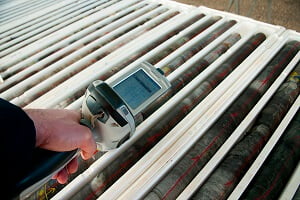Blog
How an Attorney May Build a Lead Paint Poisoning Case
Posted on behalf of Peter T. Nicholl in Lead Paint Poisoning Published on August 13, 2019 and updated on March 6, 2022. If you have been exposed to lead paint and developed health issues, you may be eligible to file a claim for compensation. You must prove another party is liable for your exposure to lead to have a chance of obtaining compensation. Below, learn more about the challenges of building a lead paint poisoning case and how an experienced attorney may be able to assist you.
If you have been exposed to lead paint and developed health issues, you may be eligible to file a claim for compensation. You must prove another party is liable for your exposure to lead to have a chance of obtaining compensation. Below, learn more about the challenges of building a lead paint poisoning case and how an experienced attorney may be able to assist you.
Our lead paint poisoning attorneys in Maryland have many years of combined experience helping victims of lead paint exposure recover the compensation they needed to move forward with their lives. Request a free, no obligation consultation today.
Figuring Out How You Were Exposed
Lead paint was used in a variety of construction materials up until the 1970s. Popular for its versatility, it is now known to be poisonous and poses a risk to animals and humans, especially small children.
As lead was so widely used in different materials, a person could have been exposed in a number of locations. Lead also builds up in the body over time, so exposure may have occurred many years before a victim was diagnosed with related health issues.
To build a lead paint poisoning case, an attorney first investigates to determine where the victim was exposed. Typical exposure scenarios include:
- At the workplace
- In an apartment or home built prior to the 1970s
- During home renovations
- While playing outdoors
- While playing with older or imported children’s toys
- From drinking water via lead pipe plumbing or a lead-contaminated well
Lead exposure is a significant risk for babies and young children. Older home renovations send particles into the air – lead-containing particles are breathed and spread to surfaces, which transfer to children’s hands. Playing in a contaminated backyard or playground causes similar issues. Older toys with lead paint or imported toys tainted with lead can make their way into the mouths of young children, leading to lead exposure.
Testing for Lead Exposure
In order for an attorney to prove lead exposure as the cause of your health issues, your medical records need to be reviewed. A number of medical tests must be performed to test for lead levels in the body. Medical evaluation is performed to note the effects of lead exposure during development. Lead poisoning is a potential cause of childhood development of Attention Deficit Hyperactive Disorder (ADHD) and other physical and mental health conditions that affect both children and adults.
Testing for Lead Paint
In the Baltimore area alone, an overwhelming majority of homes built prior to the 1950s have lead paint. Certain signs such as peeling and chipped paint are often an indicator that the paint contains lead, but this evidence and the age of your home are not enough to win a lawsuit.
X-ray fluorescence (WRF) testing is performed on homes to determine the presence of lead paint. This process uses a machine to test surfaces throughout the home, taking approximately two to four hours to perform. It is considered the most thorough option for lead paint testing.
Laboratory testing can also be performed on paint chips collected from your home or other locations believed to be the source of exposure. Labs use an atomic absorption spectrometer to determine the presence of lead in samples. This type of testing is quite expensive and is typically used only if XRF testing results are inconclusive.
If exposure is believed to have occurred in a former residence, historical lead testing results may be used to help prove your case.
Get Help from Our Attorneys Now
If you have developed health issues as a result of lead paint exposure, you may be eligible to seek compensation for your medical bills, lost wages, and pain and suffering. Our Maryland lead paint poisoning lawyers have a proven track record of getting clients the compensation they needed. If you we determine that you have a valid claim, we are prepared to pursue maximum compensation for your damage.
Request a free, no obligation consultation today and learn what legal options may be available to you. There are no upfront fees and payment is only due if we recover compensation for you.
Call 410-244-7005 or fill out our Free Case Evaluation form now.

